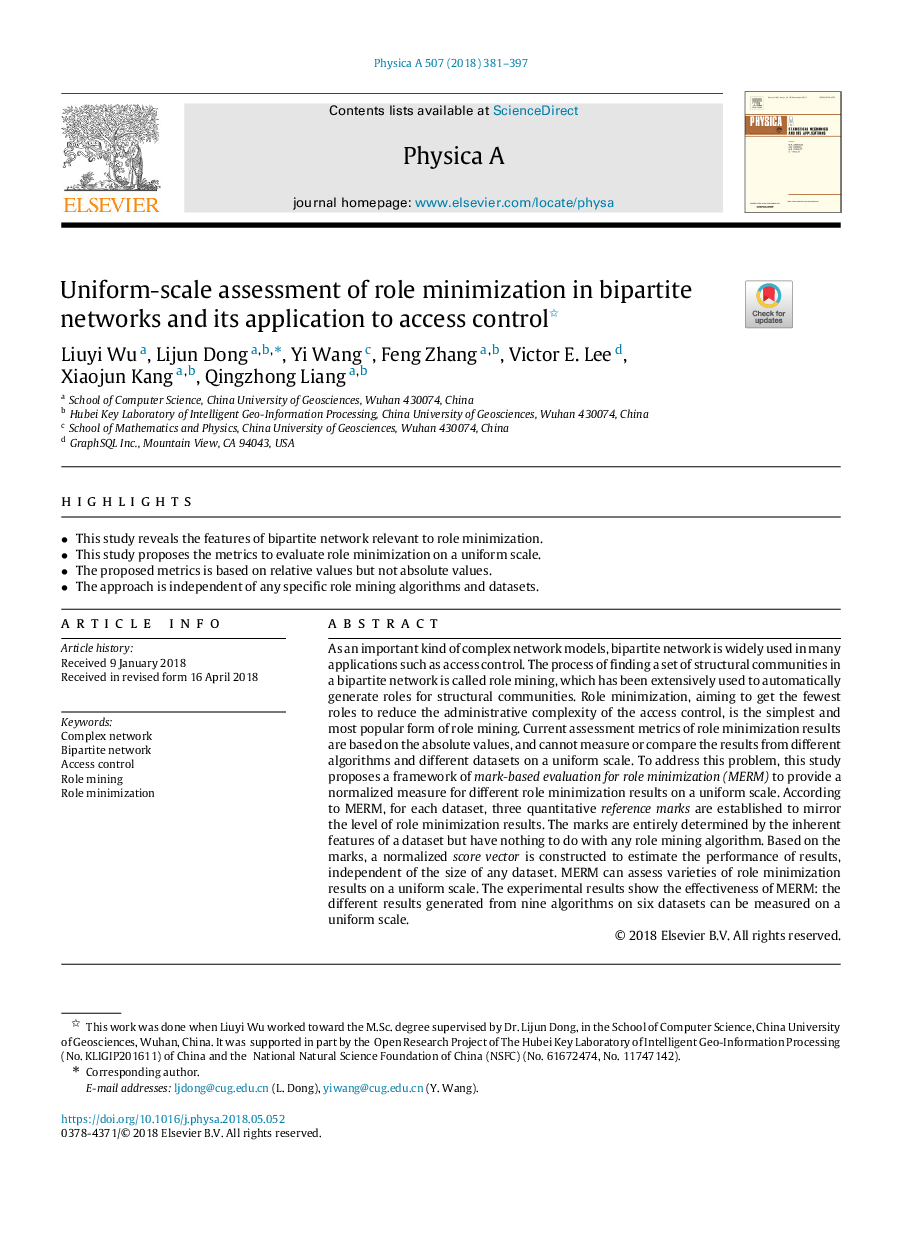| Article ID | Journal | Published Year | Pages | File Type |
|---|---|---|---|---|
| 7374943 | Physica A: Statistical Mechanics and its Applications | 2018 | 17 Pages |
Abstract
As an important kind of complex network models, bipartite network is widely used in many applications such as access control. The process of finding a set of structural communities in a bipartite network is called role mining, which has been extensively used to automatically generate roles for structural communities. Role minimization, aiming to get the fewest roles to reduce the administrative complexity of the access control, is the simplest and most popular form of role mining. Current assessment metrics of role minimization results are based on the absolute values, and cannot measure or compare the results from different algorithms and different datasets on a uniform scale. To address this problem, this study proposes a framework of mark-based evaluation for role minimization (MERM) to provide a normalized measure for different role minimization results on a uniform scale. According to MERM, for each dataset, three quantitative reference marks are established to mirror the level of role minimization results. The marks are entirely determined by the inherent features of a dataset but have nothing to do with any role mining algorithm. Based on the marks, a normalized score vector is constructed to estimate the performance of results, independent of the size of any dataset. MERM can assess varieties of role minimization results on a uniform scale. The experimental results show the effectiveness of MERM: the different results generated from nine algorithms on six datasets can be measured on a uniform scale.
Related Topics
Physical Sciences and Engineering
Mathematics
Mathematical Physics
Authors
Liuyi Wu, Lijun Dong, Yi Wang, Feng Zhang, Victor E. Lee, Xiaojun Kang, Qingzhong Liang,
